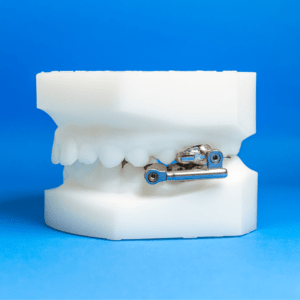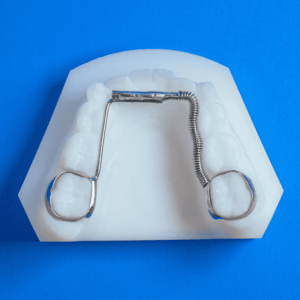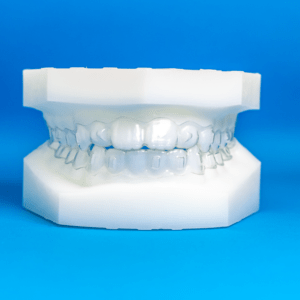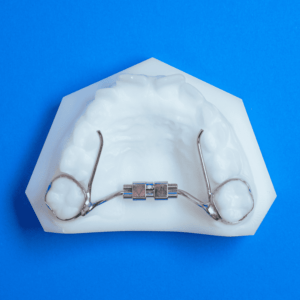Available in 3D Printing?
- Yes
Arch Options
- Upper Arch
Screw Options
Optional:
- Click Screw
Anchorage Types
- Bands
- ROCS
- Crowns
- OnBRACE®
Acrylic Color Options
- Please note that only the Specialty Appliances standard colors may be selected. No custom designs or swirls.
Accurate & Predictable Distalization
The Rapid Molar Distalizer (RMD) offers accurate and predictable molar distalization without tipping the molars.
RMD's low-buccal profile provides greater patient comfort with no tongue, speech, or swallow interference. Meanwhile, anchorage is achieved with an oversized Nance button on the anterior of the palate.
The appliance is anchored to bands on the 1st bicuspids and 1st molars on patients without fully erupted permanent 2nd molars. The 2nd bicuspid will follow the 1st molar down the alveolar process.
Efficient Transition Process
The distalization is so predictable that a Nance can be fabricated while we fabricate the RMD. This is achieved when the doctor indicates on the Rx the amount of distalization that is needed per quadrant and the original model is duplicated.
The molars from the duplicate model are removed and distalized per the prescription, and a Nance is then constructed with small omega loops.
The process allows the doctor to remove the RMD and seat the Nance in the same appointment. This offers both the doctor and patient a very efficient transition process.
Variants
Anchoring
If the patient has fully erupted permanent 2nd molars, the appliance is anchored to the 2nd molar bands and the 2nd bicuspids. In this case, the 1st molar will follow the 2nd molar down the alveolar process.
The activation schedule for either appliance is generally every other day or twice a week. Since the appliance is only activated 1/4 millimeter per turn, the Nance does not get embedded into the tissue, and the molar roots stay upright during treatment.
Allows for Transverse Corrections
The RMD appliance can also incorporate an expansion screw to allow for transverse corrections before the distalization process begins. In this case, the screw is placed in the 2nd bicuspid area and soldered to the bicuspid bands.
The appliance has an extension to the first or second molars as needed but is not soldered to the molar bands to allow for the distalization to occur.








